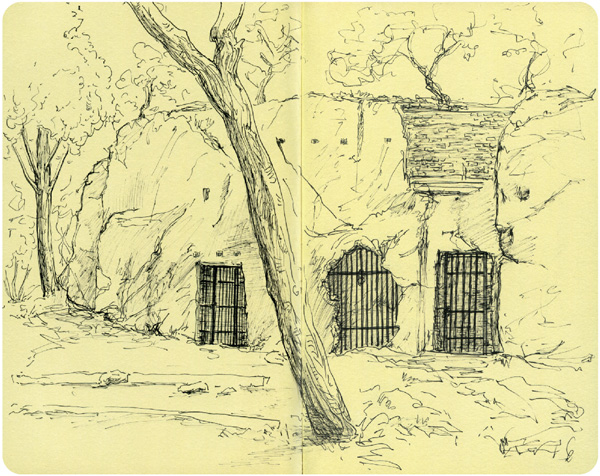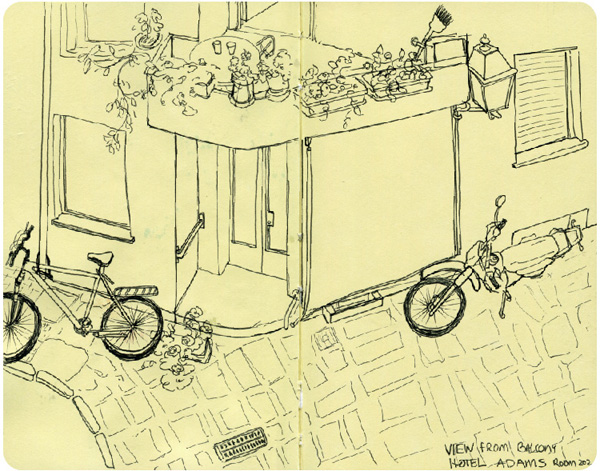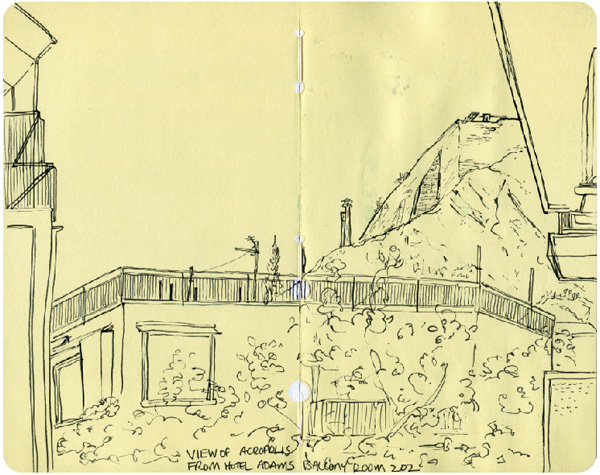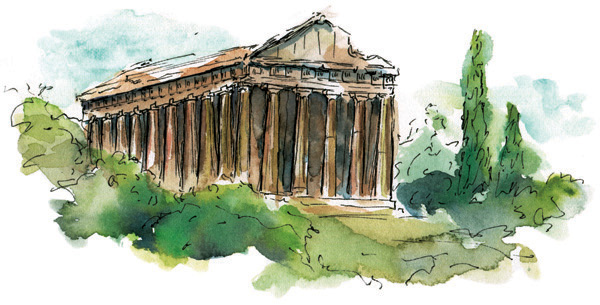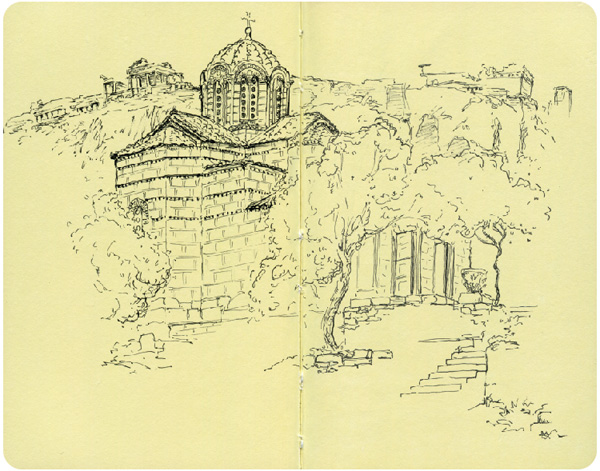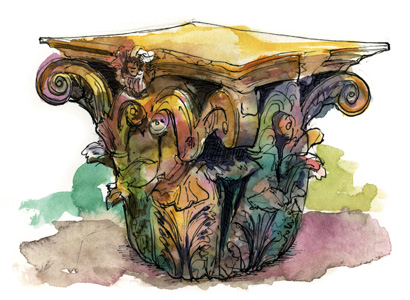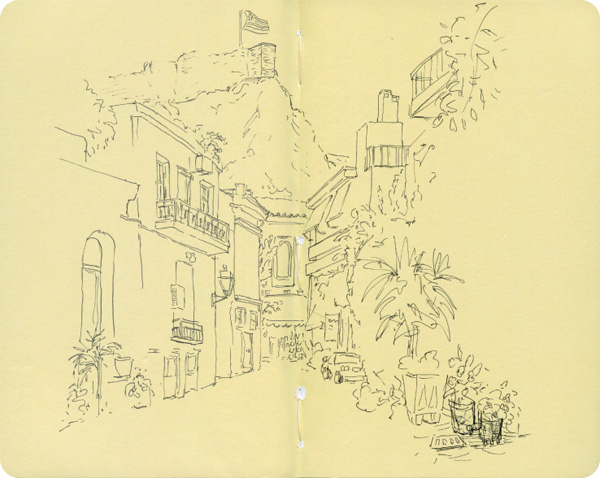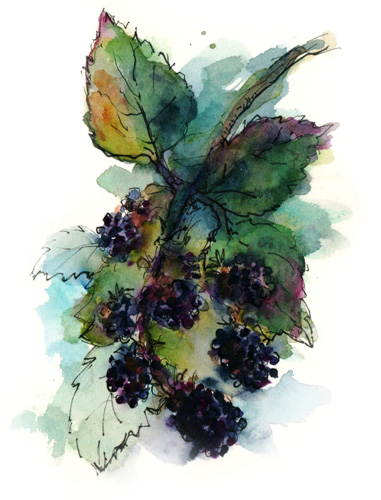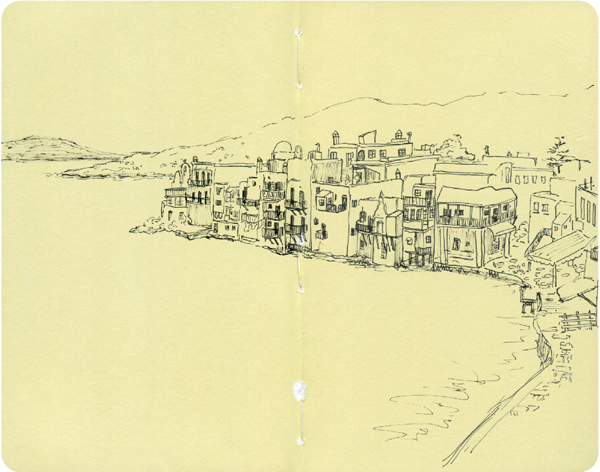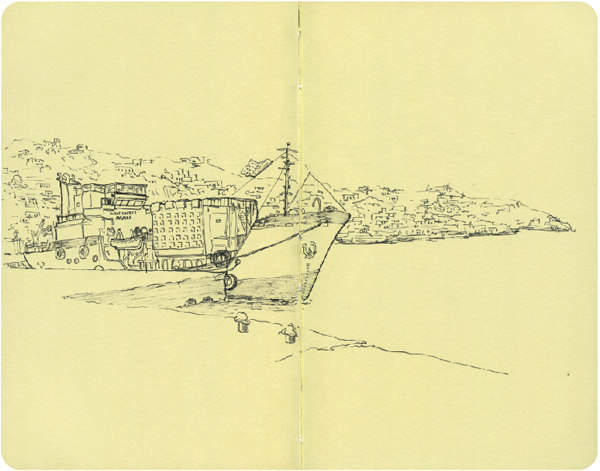On our last day in Athens, we have one prominent place left to visit, the Hill of the Muses. As we make our way around the Acropolis through zig-zagging streets, we pause for a moment to watch an organ grinder. An old man wearing a bowler hat pulls the crank while lighting up a cigarette, and an unfamiliar song begins to resonate outward. The organ itself is really the attraction, with fringe, jewelry, flowers and old black-and-white movie-star photos decorating its sides. A young boy runs around with hat in hand collecting money, replacing the traditional monkey.
With our day quickly passing, we continue our walk up the Hill of the Muses overlooking the city. Our first stop is the Prison of Socrates, where the philosopher was supposed to have been jailed before they forced him to drink deadly hemlock. He had been convicted of corrupting the youth of Athens with his philosophical teachings. This is also the site where, during the Second World War, all the Acropolis’ artifacts were hidden from the Nazis. I’m not that interested in drawing the site but my dad is insistent, so I pull out my gear and give it a shot. I’m not sure what I should include in the drawing. I know its historical significance, but the hill seems uninteresting and flat. I step back a bit to let the tree trunk cross the image and give the drawing depth. Now it starts taking on new life, and I’m glad my dad recommended drawing here.
